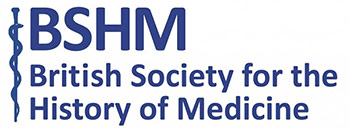Will Parker describes the work of a pioneer of cardiac surgery, Judson Chesterman.
The first mitral valve replacement is generally credited to Nina Braunwald (1928-1992) in March 1960, the patient surviving for around 4 months. The first Starr-Edwards caged ball valve followed in the same year and the procedure subsequently became widespread. There is good reason, however, to believe that the first operation of this kind was carried out in 1955 at Sheffield’s City General (now Northern General) Hospital by Judson T. Chesterman (1903-1987, Figure 1).
Chesterman studied at Bristol but settled in Sheffield, where his great-grandfather had  set up a prominent engineering firm. He developed a practice in cardiothoracic surgery, performing over 100 heart operations a year by the 1950s. However, many cases of heart valve disease, including those resulting from regurgitation (leaking) rather than stenosis (narrowing), remained inoperable and often fatal.
set up a prominent engineering firm. He developed a practice in cardiothoracic surgery, performing over 100 heart operations a year by the 1950s. However, many cases of heart valve disease, including those resulting from regurgitation (leaking) rather than stenosis (narrowing), remained inoperable and often fatal.
Charles Hufnagel (1916-1989) of Washington D.C. had reported the implantation of an artificial valve for aortic regurgitation in 1954. Chesterman began designing artificial valves, but focussed on the more difficult problem of replacing the mitral valve, the most commonly affected by then-common rheumatic fever.
Initially working with copper prototypes, these evolved into refined Perspex creations. The hospital pathology technician, Clifford Lambourne, turned the valves, consisting of an oval double-flanged ring in which sat a tethered disc, on a huge lathe (Figure 2). Lambourne told the hospital newspaper years later: ‘Turning left a roughish surface and it had to be smooth…My wife and I were keen cinema-goers. We sat in the cinema, watching films, me with a piece of silk cloth in my hands, polishing the pieces…It took about three feature length films to get the valve smooth enough.’ 
On 22 July 1955, Chesterman implanted the prosthesis into a 34-year-old man with end-stage mitral valve disease. Lacking cardiopulmonary bypass, he cooled the patient, cross-clamped the vena cavae then quickly performed the operation.
Though acutely successful, as Chesterman later wrote: ‘He read the evening paper and was comfortable at night when I last saw him. He was found dead in the night at about 3.30 am.’ The valve had dislocated. Retrieved at post-mortem examination, it still exists. (Figure 3)
 Chesterman realised cardiopulmonary bypass would be key to further procedures of this kind. He subsequently visited Walton Lillehei and Richard De Wall in the US, who had developed the pump oxygenator. Chesterman went on to build and use his own machine in Sheffield on 26 February 1957, one of the first outside America to do so. (Figure 4)
Chesterman realised cardiopulmonary bypass would be key to further procedures of this kind. He subsequently visited Walton Lillehei and Richard De Wall in the US, who had developed the pump oxygenator. Chesterman went on to build and use his own machine in Sheffield on 26 February 1957, one of the first outside America to do so. (Figure 4)
 As well as technological contributions, Chesterman’s legacy includes the subsequent flourishing of a cardiothoracic unit in Sheffield, now housed in the Chesterman Wing at the Northern General Hospital. In addition, he had an interest in archaeology and, after retiring from clinical practice, he founded the University of Sheffield Osteology Laboratory.
As well as technological contributions, Chesterman’s legacy includes the subsequent flourishing of a cardiothoracic unit in Sheffield, now housed in the Chesterman Wing at the Northern General Hospital. In addition, he had an interest in archaeology and, after retiring from clinical practice, he founded the University of Sheffield Osteology Laboratory.
Further reading:Continue reading
